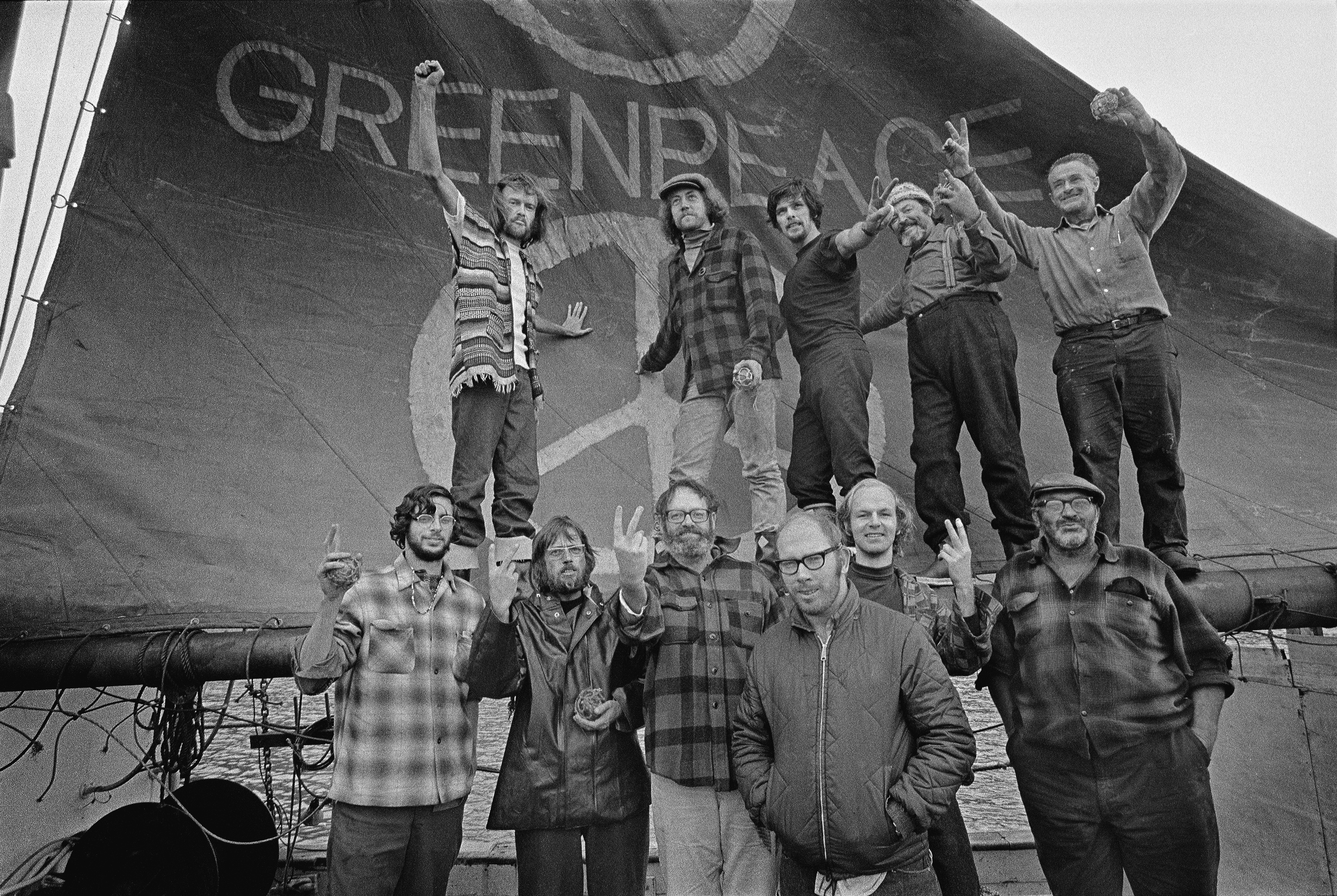Greenpeace, the internationally renowned environmental activist organization, had its humble beginnings in 1971 in Vancouver when a group got together to protest the atomic bomb testing on Amchitka Island. Reluctantly led by Bob Hunter, a columnist at the Vancouver Sun, a ragtag group of accidental sailors set out on a rickety old ship to see if they could raise awareness and derail the testing.
That first mission didn’t go exactly as planned, but upon returning to Vancouver the group were treated as heroes, and they had raised awareness about an important issue. They all felt that things were unfinished and there was more that they could accomplish, and after a bit of discussion and convincing by Hunter, they decided that their next mission would be to confront whaling ships and try to stop the brutal slaughter of whales in the Pacific.
With a voiceover reciting Hunter’s journal entries and plenty of old footage alternated with present day interviews with those involved and Hunter’s daughter, Emily, this documentary provides an inspiring look at the brave people who began this international movement and contributed to changing the world. It is also framed by five rules for changing the world: plant a mind bomb, put your body where your mouth is, fear success, the revolution will not be organized, and let the power go. Hunter knew that in order to raise public awareness, you had to create an image that would become iconic and travel around the world — you had to plant a mind bomb.
After lengthy preparations, the Greenpeace team set out on their mission to save the whales. Once they go out into the open ocean, there was only one problem — they didn’t know where the whaling ships were or how to find them. With a bit of luck and the help of ecologist Patrick Moore, they managed to get maps of where some of the ships might be. It was still like looking for a needle in a haystack. Moore has led a very uninspiring career since leaving Greenpeace, and now exploits his former affiliation with them when acting as a spokesperson for large corporations claiming that climate change is either not happening — or if it is, that it’s not a problem.
When they finally found a Russian whaling ship, they had a dramatic encounter with a harpoon flying about 15 feet over their zodiac. Paul Watson, a key member of this mission, later went on to found the Sea Shepherd Conservation Society and he said that the moment that changed his life was sitting on top of a floating dead whale, feeling its body heat, and looking into its still-open eye. From that moment on he knew he had to keep fighting to save the many species that were being driven to extinction by whaling. Now his organization confronts Japanese whaling ships who are illegally plundering the oceans and anyone else on the wrong side of environmental laws. You may have seen him on the reality show Whale Wars.
The images of whale blood spilling out the side of these massive slaughterhouses of ships is enough to make you feel sick, and possibly even more brutal than that was the footage of the seal hunt in Newfoundland. Watching men club a baby seal to death and drag it away as its mother follows behind in distress immediately makes one understand why Watson felt so passionately about the issue and why he and Hunter stood in front of an icebreaker ship to protest the hunt.
Independent Greenpeace offices were popping up all along the West Coast and doing their own fundraising while the Vancouver chapter was in debt from their expensive 1975 whaling mission and 1976 seal hunt campaign. While some wanted to fight to get the other offices to give some of their funds to Vancouver, Hunter knew the importance of letting the power go and wasn’t interested in controlling them. They eventually decided to bring in a new leader and create some cohesion among the offices while allowing them to remain independent, creating Greenpeace International in 1979. Personal politics drove Hunter to leave Greenpeace, but he later returned to journalism and covered environmental issues, including boarding Sea Shepherd ships to help them create iconic images and plant more mind bombs. This is a thrilling documentary full of great footage of eco-warrior adventures and enlightening interviews revealing all the different perspectives of their journey.

